16 Classic Flowers for a Beautifully Traditional Garden
Old-fashioned flowers bring a timeless charm to any garden. These plants offer a connection to the past, with blooms that have stood the test of time. If you are looking to add a touch of nostalgia to your garden, these flowers will not disappoint. Their vibrant colors and sweet fragrances can transform any outdoor space. Let us explore some of the most beautiful and classic flowers you can grow for a spectacular display.
This post may contain affiliate links, which helps keep this content free. Please read our disclosure for more info.
Peonies
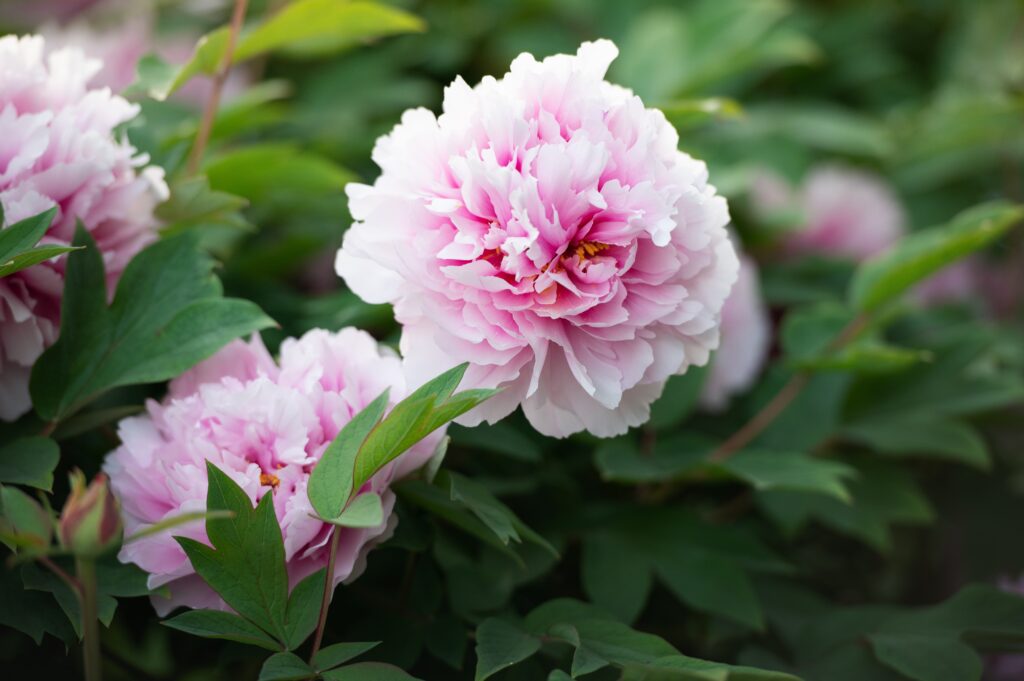
Peonies are a classic flower known for their large, fragrant blooms. These flowers come in various colors, including pink, white, and red, and are often the centerpiece of traditional gardens. Peonies thrive in full sun and well-drained soil, making them easy to care for once established. They bloom in late spring to early summer, adding a burst of color to your garden during that time.
These flowers are also long-lasting, with blooms that can stay fresh for days in a vase. Peonies can be divided every few years to promote healthier growth. They have been admired for centuries for their elegance and sweet scent. A garden with peonies always looks spectacular, thanks to their lush, full flowers.
Roses
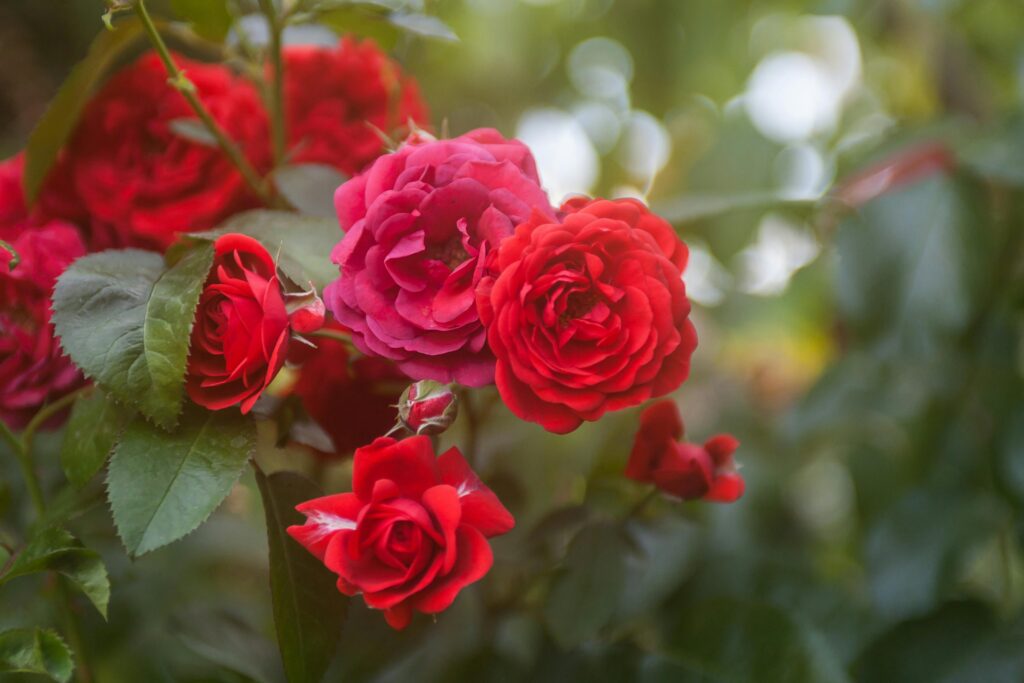
Roses have long been symbols of beauty and romance. These flowers come in a variety of types, including climbing, bush, and hybrid tea roses, offering flexibility in how you design your garden. Roses require full sunlight and regular pruning to keep them healthy and vibrant. Their flowering season typically lasts from spring through autumn, depending on the variety.
Roses can be grown as stand-alone plants or as part of a floral arrangement. The wide range of colors and sizes makes them suitable for any garden style, from formal to casual. They are relatively easy to grow with the right care, and they attract pollinators like bees and butterflies. Their timeless beauty adds sophistication and charm to any garden display.
Lavender
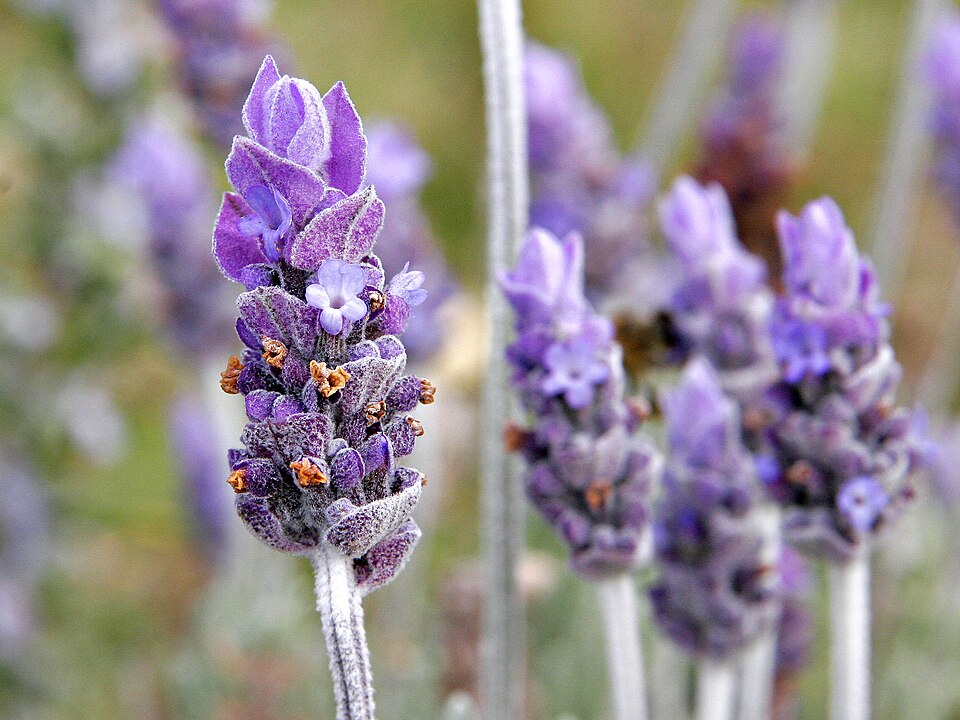
Lavender is a fragrant herb that can add a calming touch to your garden. Known for its vibrant purple flowers, lavender thrives in well-drained soil and plenty of sunlight. It is a hardy plant that requires little maintenance once it is established, making it a favorite in low-maintenance gardens. Lavender blooms in late spring to early summer and continues to thrive throughout the season.
Aside from its pleasant fragrance, lavender is also a great plant for attracting pollinators. It is often used in herbal remedies and is perfect for crafting natural sachets and oils. The striking color and soothing scent of lavender make it a wonderful addition to any garden. It pairs well with other flowers, such as roses or daisies, for a beautifully mixed garden display.
Daisies
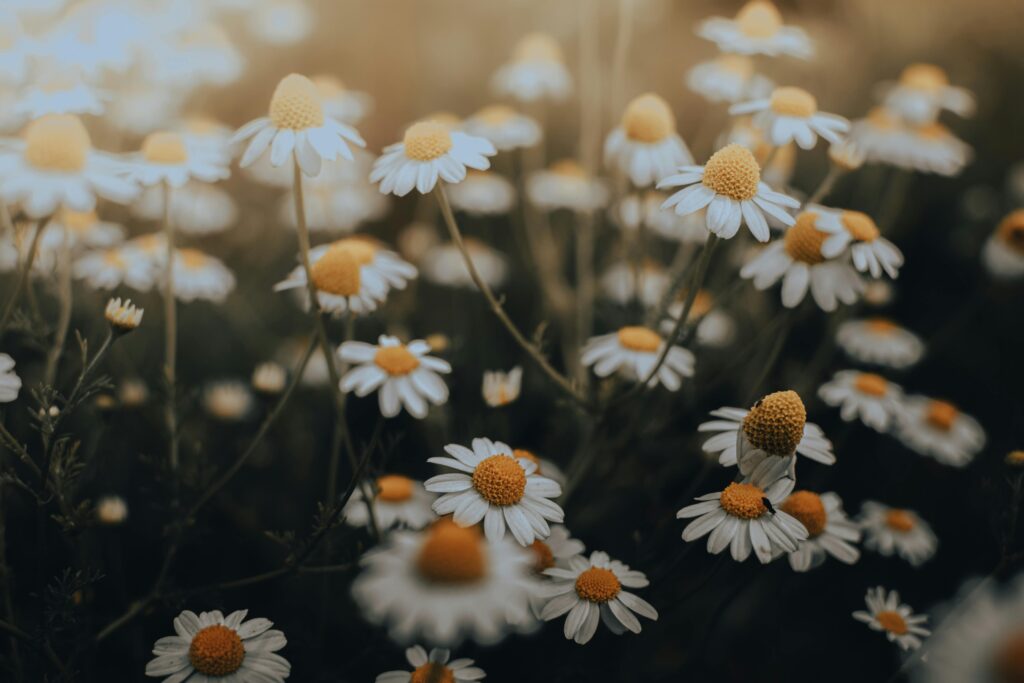
Daisies are simple, cheerful flowers that add a sense of freshness to any garden. Known for their white petals and yellow centers, they bloom from late spring to early fall. Daisies are low-maintenance and thrive in full sunlight, making them perfect for gardeners with limited time. They are hardy and can grow in various soil types, provided it is well-drained.
These flowers are often used to create a casual, natural look in gardens. Daisies work well in meadows or mixed borders, blending beautifully with other plants like lavender and peonies. They are also great for attracting bees and butterflies, adding to the life of your garden. The cheerful appearance of daisies can brighten up even the dullest spots.
Delphiniums
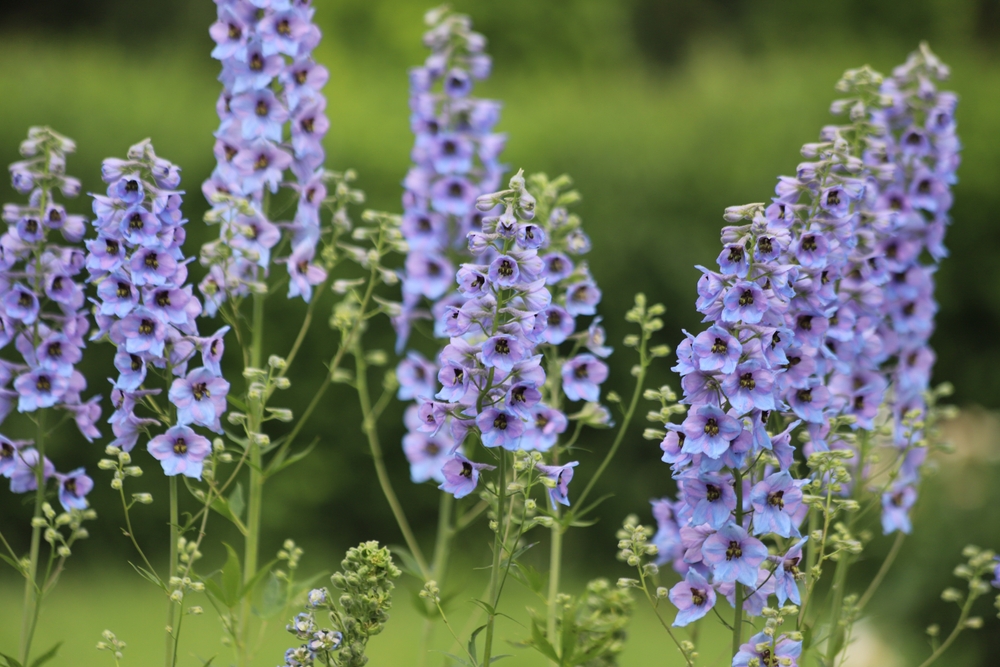
Delphiniums are tall, elegant flowers that make a bold statement in any garden. Known for their vibrant blue, purple, or white flowers, they can grow up to 6 feet tall. These flowers bloom in early to midsummer, providing a pop of color to your garden. Delphiniums thrive in full sun and well-drained, slightly alkaline soil.
These flowers add a dramatic vertical element to garden displays, making them a perfect choice for the back of flower beds. They are often used to complement shorter flowers like daisies or roses. While delphiniums require some care, including staking and regular watering, they reward gardeners with striking blooms. Their height and vibrant colors create an eye-catching garden feature.
Foxgloves
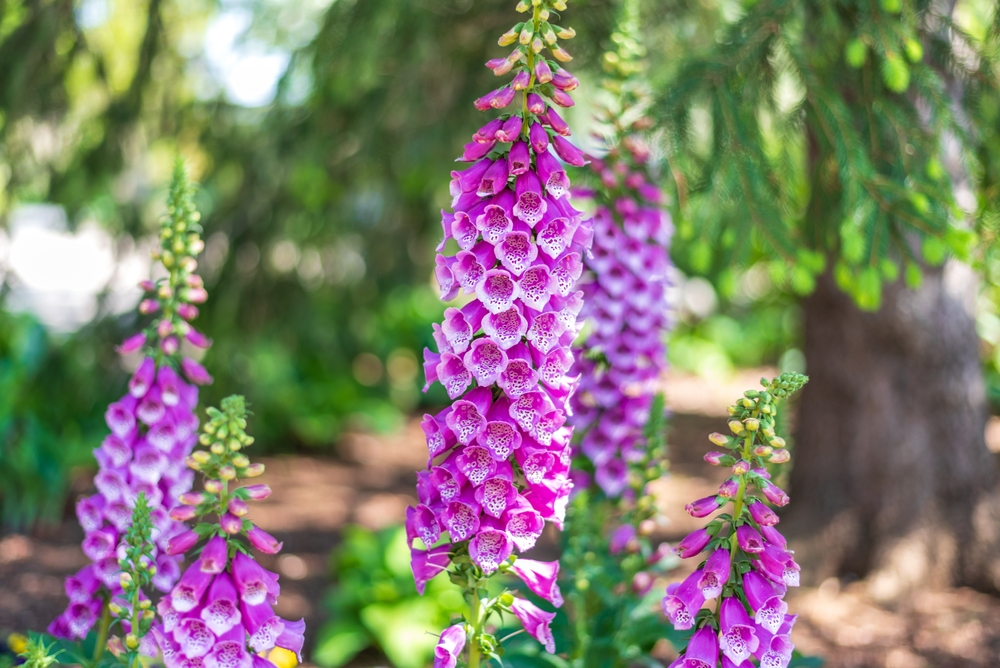
Foxgloves are tall, tubular flowers that come in shades of purple, pink, and white. These flowers are known for their striking shape and their ability to attract hummingbirds and bees. Foxgloves prefer well-drained soil and partial to full sun, making them ideal for borders or woodland gardens. They bloom from early summer to late fall, adding long-lasting color to your garden.
Foxgloves are perfect for creating a vertical accent in the garden, with their towering flower spikes. They are well-suited for both cottage gardens and formal settings. These flowers do require some care, including occasional staking to prevent them from toppling over. Despite the care needed, their striking appearance makes them well worth the effort.
Lilacs
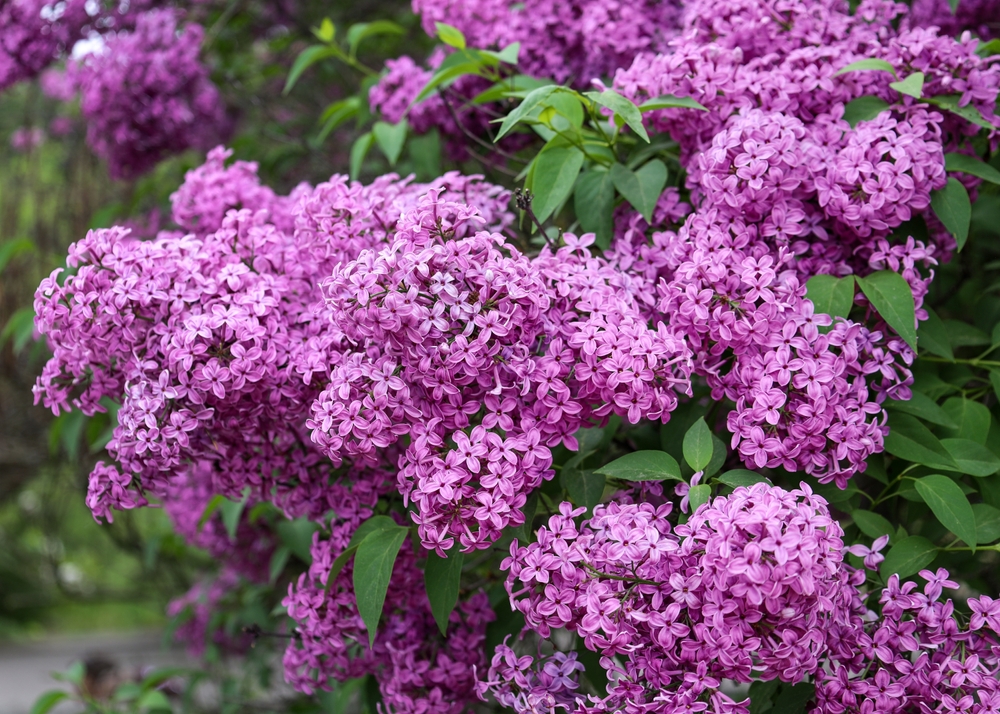
Lilacs are beloved for their fragrant flowers and attractive, vibrant purple, blue, or white hues. They thrive in well-drained, slightly alkaline soil and full sun, making them ideal for most home gardens. Lilacs bloom in late spring to early summer, filling your garden with a sweet, floral scent. These flowers grow best in cooler climates but can adapt to warmer areas with proper care.
Lilacs are easy to grow and maintain, and they can live for many years, making them a long-term addition to your garden. Their rich fragrance is a standout feature, and they are often used in flower arrangements. Lilacs are also great for attracting pollinators such as bees and butterflies. Their soft, pastel colors and sweet scent bring a classic touch to any outdoor space.
Sunflowers
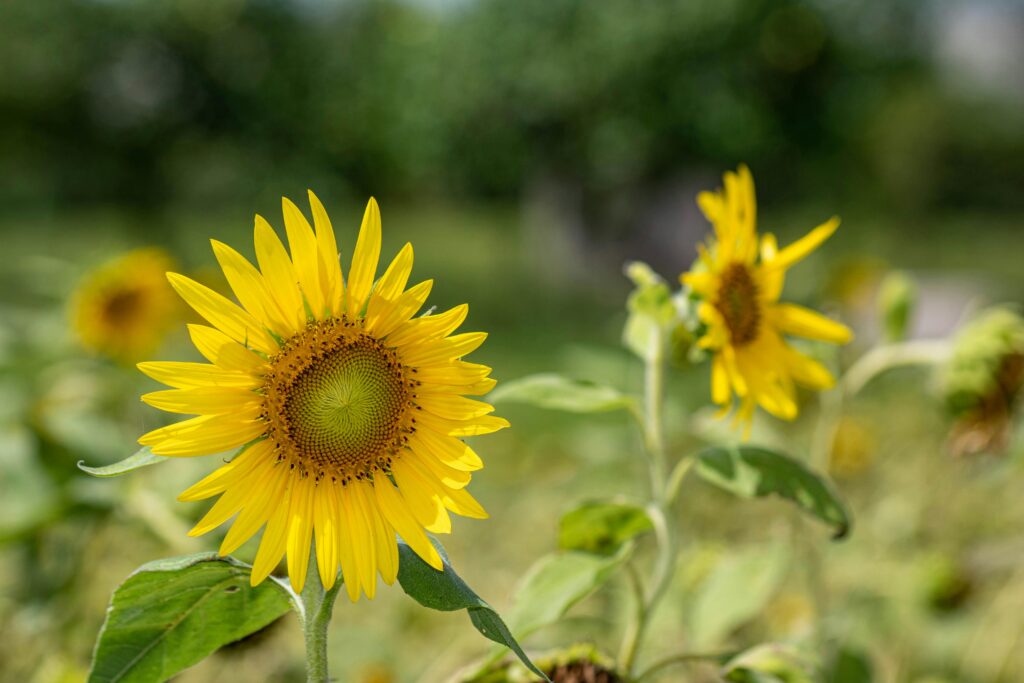
Sunflowers are bright, cheerful flowers that can turn any garden into a vibrant display. Known for their large yellow petals and tall, sturdy stems, sunflowers are easy to grow in full sun. They bloom from summer to early fall and thrive in well-drained, slightly acidic soil. Sunflowers can grow anywhere from a few feet to over 10 feet tall, depending on the variety.
These flowers are perfect for creating a bold, sunny border in your garden. They are also great for attracting birds and bees, adding more life to your garden. Sunflowers are low-maintenance, requiring only regular watering and support to prevent them from leaning. They are a favorite among gardeners who want to add a fun, colorful touch to their outdoor spaces.
Sweet Peas
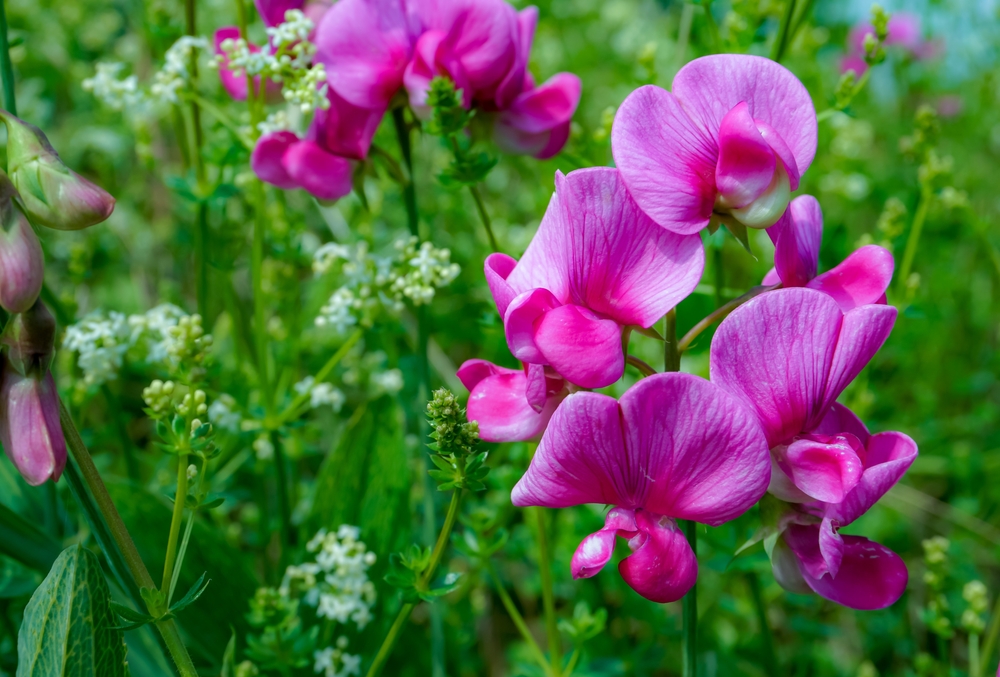
Sweet peas are climbing flowers that produce delicate, fragrant blooms in shades of pink, purple, and white. They are often used to create a romantic atmosphere in the garden, whether in containers or growing along trellises. Sweet peas thrive in well-drained, fertile soil and prefer cooler temperatures, making them ideal for spring gardens. They bloom from early spring to late summer, providing color and scent throughout the season.
These flowers are easy to grow and can be trained to grow vertically, making them perfect for smaller gardens. Their sweet fragrance makes them ideal for cutting and adding to indoor flower arrangements. Sweet peas can be grown alongside other climbing plants, such as morning glories, to create a beautiful, fragrant display. Their charming blooms and pleasant scent add a touch of nostalgia to any garden.
Iris
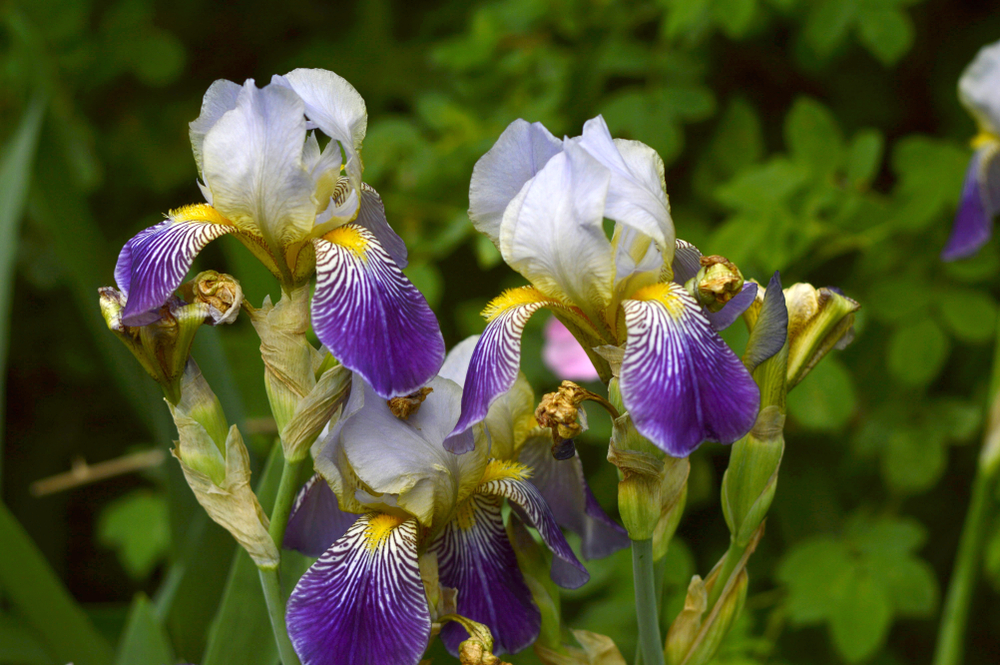
Iris flowers are known for their intricate petals and wide range of colors, including purple, blue, yellow, and white. They thrive in full sun and well-drained soil, making them an ideal choice for gardens with plenty of sunlight. Irises bloom in late spring to early summer, providing vibrant color to your garden during that time. These flowers can grow up to 3 feet tall, adding vertical interest to flower beds.
Irises are relatively easy to care for and can be planted as part of perennial borders or wildflower gardens. Their unique, elegant shape makes them a favorite for cutting and displaying in vases. The flowers’ variety in color and form allows them to complement other flowers, such as peonies and daylilies, for a stunning garden display. Irises are a beautiful, timeless addition to any garden.
Heliotropes
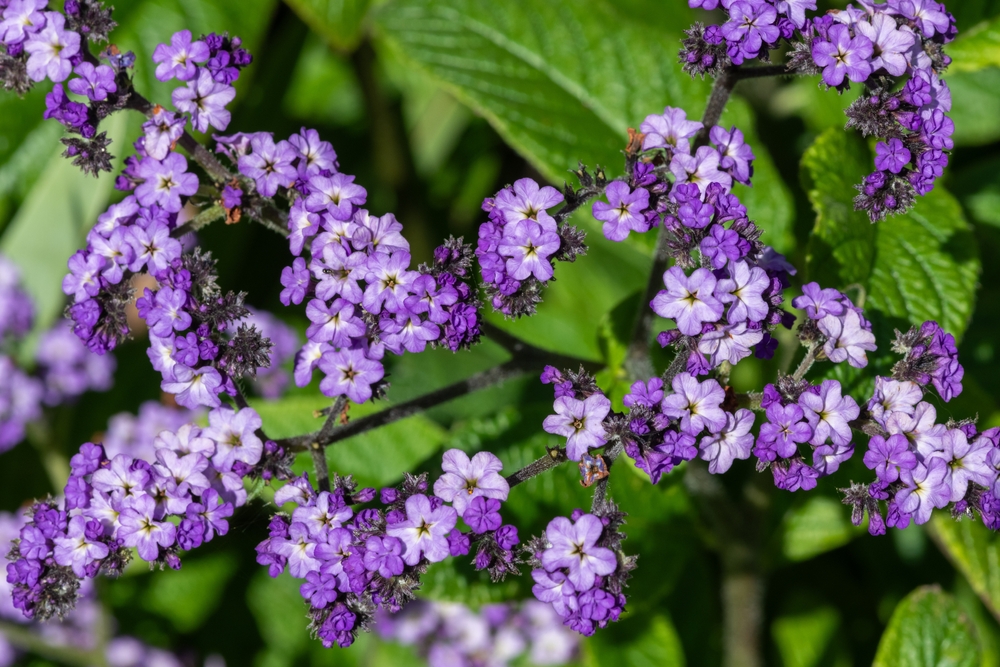
Heliotropes are known for their delightful fragrance and vibrant clusters of small flowers in shades of purple, white, and pink. These flowers thrive in full sun and well-drained, fertile soil, making them perfect for flower beds or containers. Heliotropes bloom in late spring to summer, providing a burst of color and a pleasant scent during the warmer months. They typically grow up to 18 inches tall, making them ideal for both small and large gardens.
Heliotropes are popular for their sweet, vanilla-like fragrance, which makes them a favorite in herb and flower gardens. They can be used to fill in gaps in the garden or planted along borders for a fragrant walkway. These plants do require some maintenance, including regular watering and deadheading, to keep them blooming. Their unique scent and lovely colors add charm to any garden display.
Poppies
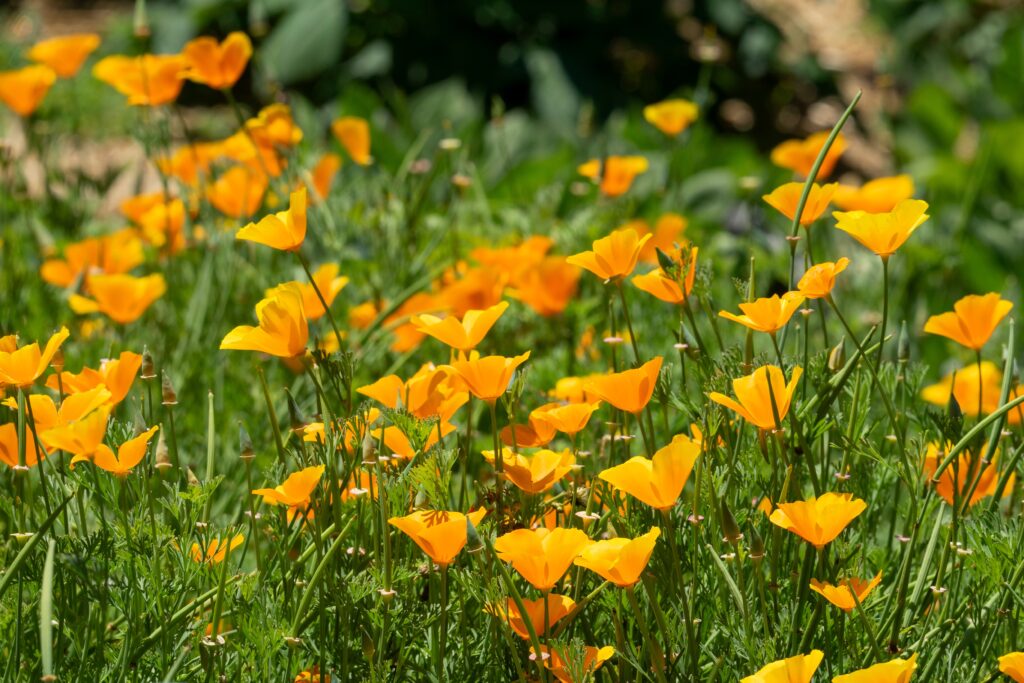
Poppies are known for their bold, vibrant blooms in red, orange, pink, and white. These flowers are perfect for adding a splash of color to any garden, as they bloom in early to late spring. Poppies prefer full sun and well-drained soil, making them easy to grow in most garden environments. Their large, showy blooms make them a standout in any floral arrangement.
Poppies are ideal for wildflower gardens or as part of a colorful border. They are relatively low-maintenance and can thrive in a variety of climates, though they do best in cooler temperatures. Their bright, cheerful flowers attract pollinators like bees and butterflies. Growing poppies will bring life and color to your garden while requiring minimal care.
Fuchsia
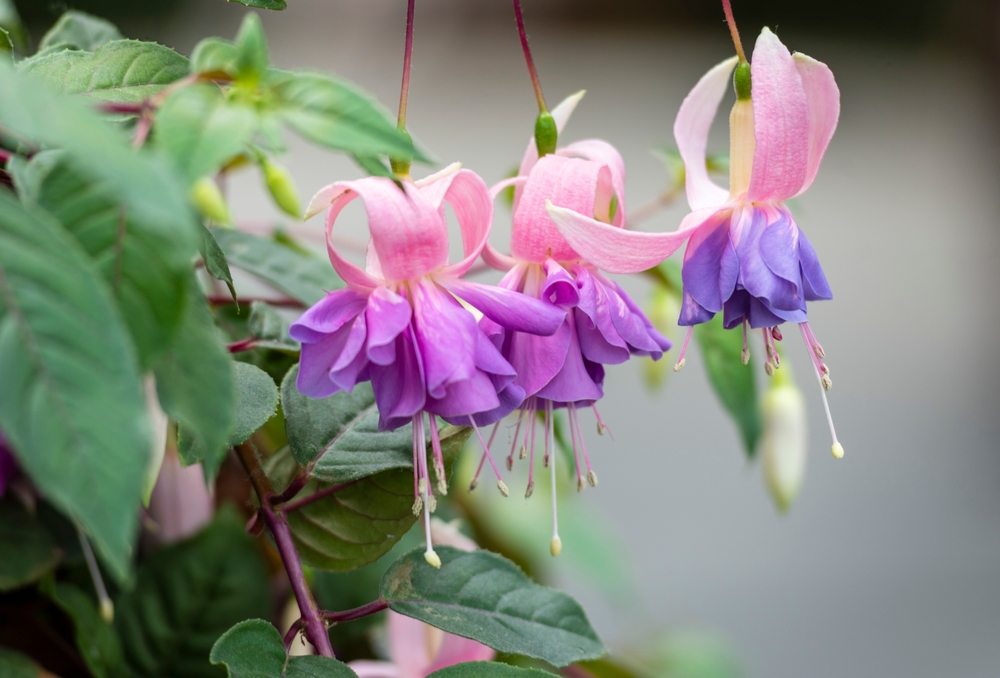
Fuchsia is a flowering plant known for its striking, drooping blooms in shades of pink, purple, and red. These flowers thrive in partial to full sun and well-drained soil. They bloom from late spring to early fall, providing vibrant colors and an elegant touch to any garden. Fuchsia plants can be grown in containers, hanging baskets, or flower beds, making them versatile for different garden spaces.
Fuchsia flowers are perfect for adding a pop of color to shaded areas of your garden. These plants are ideal for hanging baskets or containers, where their cascading flowers can be displayed. While fuchsias require regular watering and occasional pruning, their stunning appearance makes them well worth the effort. Their vibrant blooms and graceful shape bring a touch of beauty to any garden display.
Asters
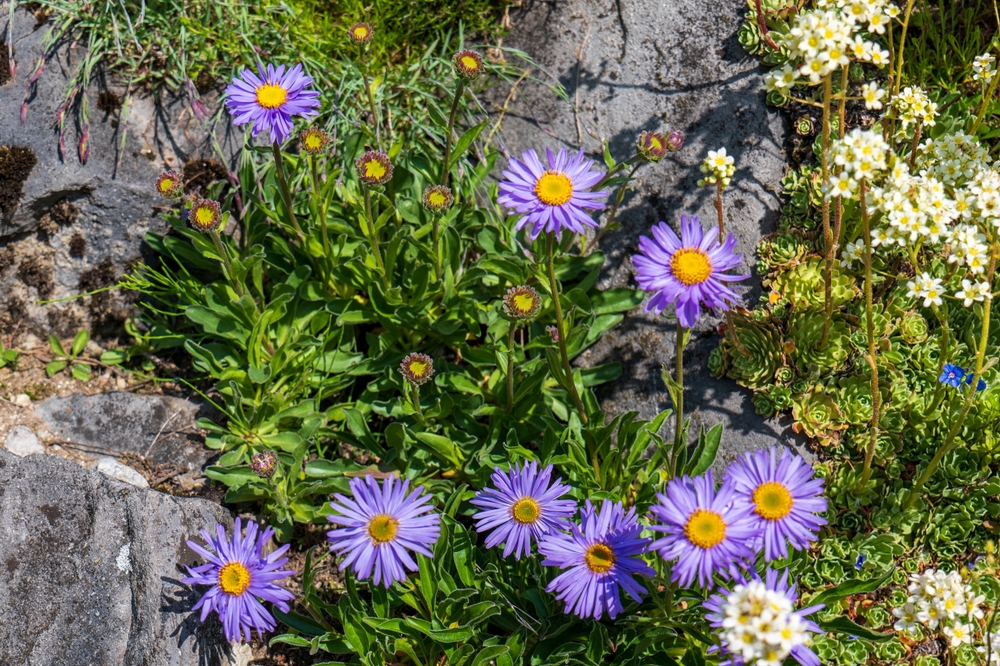
Asters are late-blooming flowers that offer a stunning burst of color in the fall. They come in shades of purple, pink, and white and are known for their star-like petals. Asters thrive in full sun and well-drained soil, making them a perfect addition to any fall garden. These flowers typically bloom from late summer to fall, providing much-needed color as other plants fade.
Asters are perfect for attracting butterflies and other pollinators, making them an eco-friendly addition to your garden. They are easy to grow and care for, requiring minimal maintenance once established. Asters work well in borders or as part of a wildflower garden. Their late-season bloom adds a lovely touch of color when most other flowers are finished blooming.
Camellias
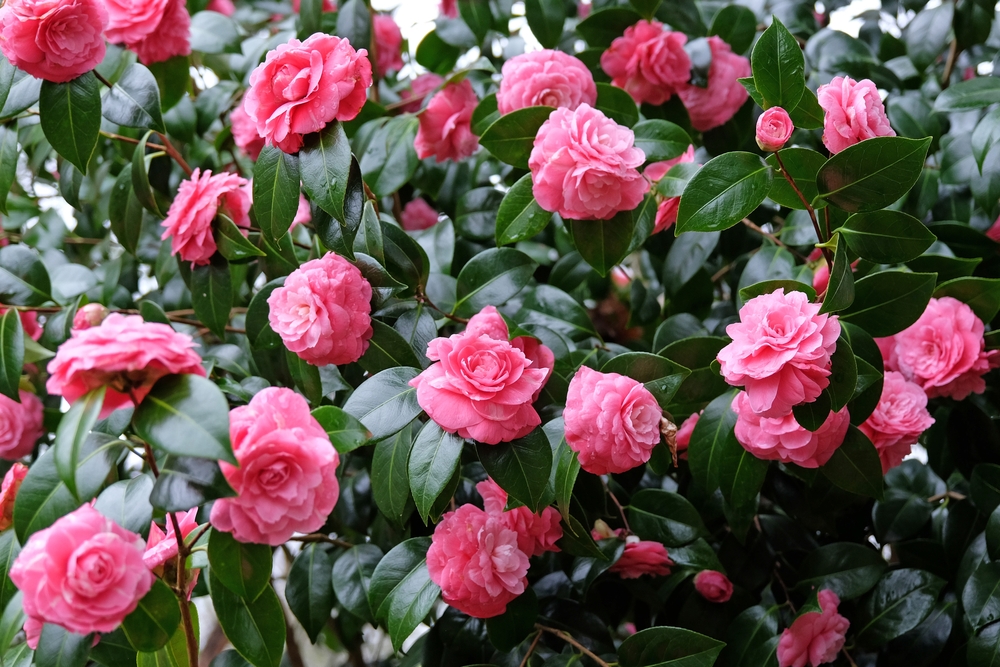
Camellias are evergreen shrubs that produce beautiful flowers in shades of white, pink, and red. These flowers bloom in the winter and early spring, making them an excellent choice for adding color during colder months. Camellias thrive in partial shade and acidic, well-drained soil. Their glossy leaves and delicate blooms make them a striking addition to any garden.
Camellias are perfect for creating a stunning focal point in a garden or as part of a hedge. They are relatively easy to care for, requiring regular watering and occasional pruning. Their early bloom provides much-needed color when most other plants are dormant. Camellias are a favorite for winter and early spring gardens, bringing elegance and beauty to any space.
Zinnias
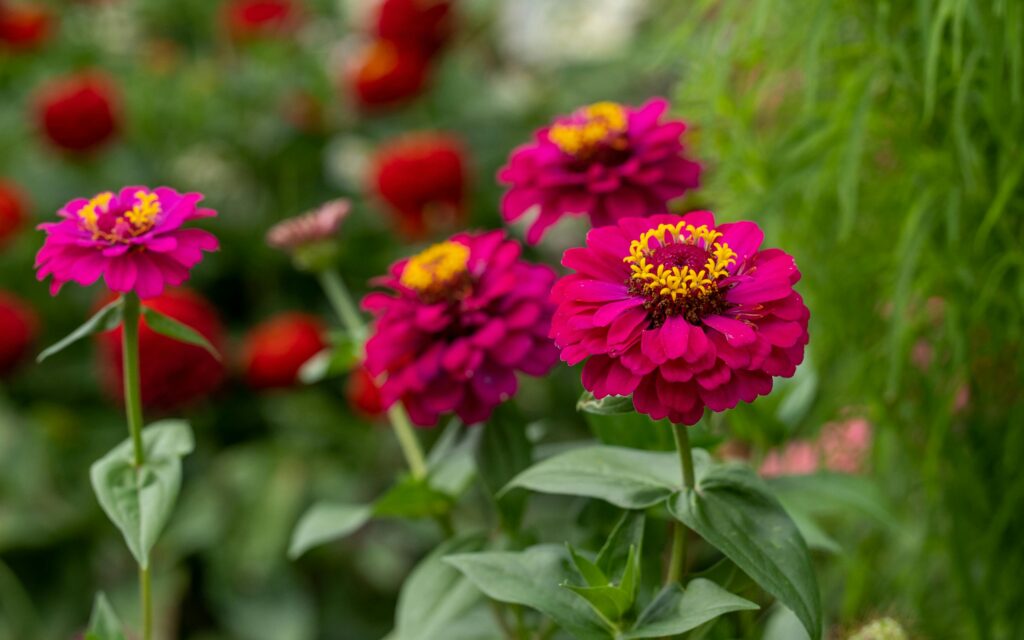
Zinnias are vibrant, hardy flowers known for their bright colors, including red, yellow, orange, and pink. They bloom from late spring to fall, providing long-lasting color in your garden. Zinnias prefer full sun and well-drained soil, making them easy to grow in most climates. They can grow anywhere from 6 inches to 3 feet tall, depending on the variety.
Zinnias are perfect for adding color to both small and large garden spaces. Their cheerful flowers attract pollinators like bees and butterflies, adding life to your garden. Zinnias are low-maintenance and easy to care for, making them great for beginner gardeners. Their vibrant blooms continue to brighten up your garden throughout the growing season.
These plants bring charm, color, and fragrance to your outdoor space, while also requiring minimal maintenance. By choosing the right flowers for your climate and garden type, you can enjoy a beautiful garden throughout the seasons. Start planning your garden today, and enjoy the vibrant beauty that these classic flowers bring.
This article originally appeared on Avocadu.
